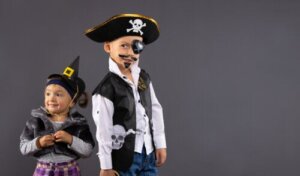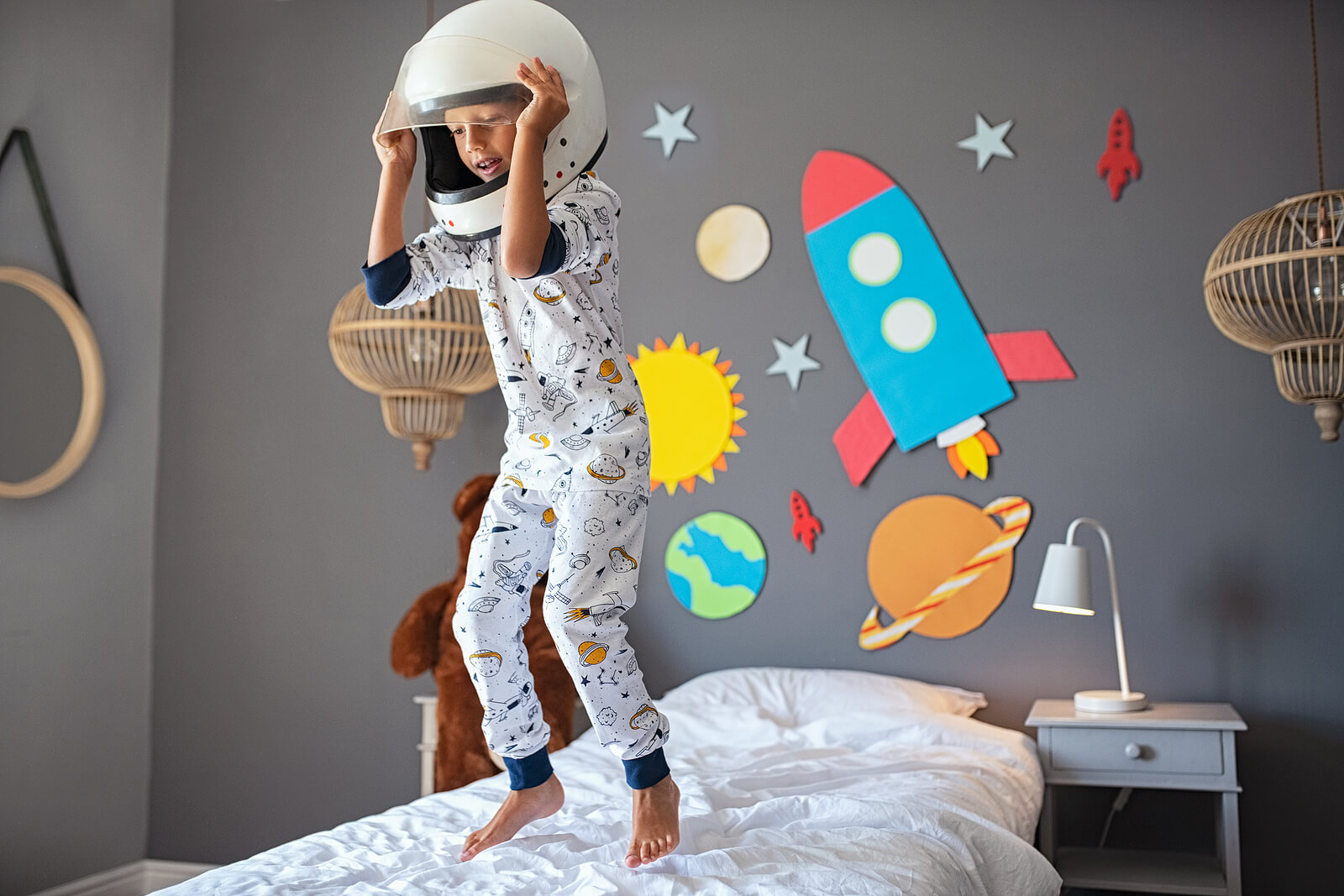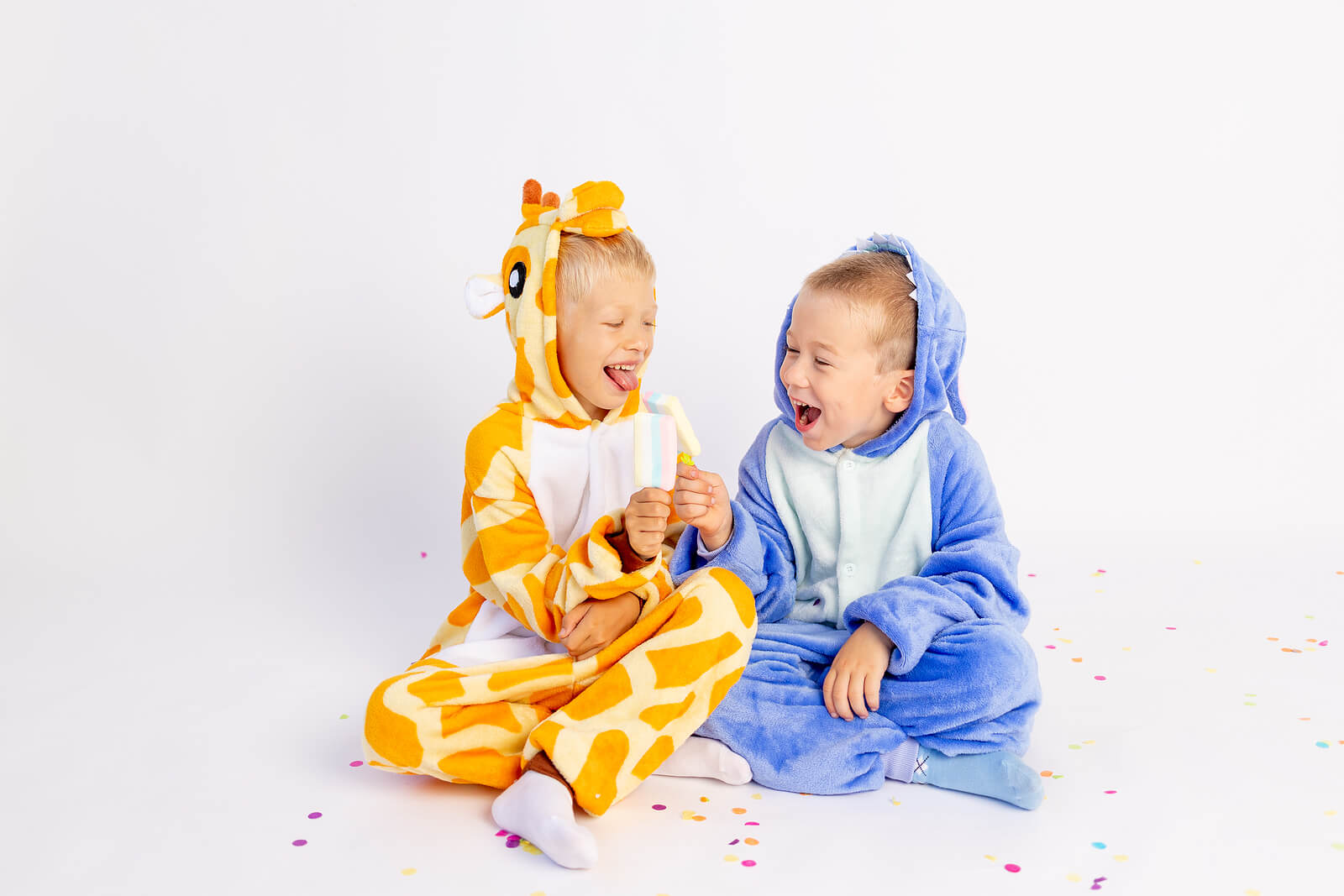What Do Children Learn When They Play Dress-Up?

Dressing up is one of children’s favorite activities. But what many don’t know is that when children dress up, besides having fun, they learn a multitude of values and fundamental skills for their integral development. Do you want to know what we’re referring to? Pay attention to what we tell you all about what children learn when they play dress-up in the following article.
Costumes are an ideal pedagogical resource to stimulate symbolic play, that is, the ability to create stories and mental representations based on fictitious situations or inspired by everyday life. This allows children to let their imagination run wild and become all those people and characters they wish to be.
“In play a child is always above his average age, above his daily behavior; in play it is as though he were a head taller than himself.”
-Lev Vygotsky
Discover: 8 Homemade Superhero Costumes

What do children learn when they play dress-up?
Playing dress-up brings numerous benefits for education and proper development in childhood. Thus, thanks to this playful activity, little ones learn the following things.
They enhance their creativity and imagination when they dress up
Little ones, having to invent and recreate stories in which they themselves and their costumes are the main characters, are forced to exploit all their creativity and imagination. Moreover, if the costume is made with their own hands, using different materials, clothes, and objects, the creative capacity is reinforced even more.
They learn to freely and openly express their feelings and thoughts
While wearing costumes, children somehow stop being themselves to become other people or characters, whether real or fictitious. This makes them feel safe and comfortable to freely express their true feelings and thoughts and externalize everything they have inside (their fears, worries, experiences, ambitions, etc.).
They develop empathy
Thanks to playing with costumes, children learn to play and assume different roles, that is, to put themselves in other people’s shoes. This allows them to better understand the feelings, emotions, thoughts, and behaviors of others.
They acquire social and communication skills
When children play dress-up with others, they learn to share the activity with their peers and to follow a set of rules of behavior, so the ability to socialize is clearly stimulated.
Also, playing dress-up helps to improve communication skills, as children tend to use a different language than usual while they play, adapting to the characteristics and personality of the people or characters they’re playing.
Playing dress-up enhances the capacity to observe and imitate
In their play, children project everything they observe day by day in their environment. Thus, when they play with costumes, they imitate and reproduce many of the behaviors, expressions, or attitudes that they’ve previously observed in their elders.
Therefore, it’s important to pay attention to how the little ones play, as this says a lot about them and the environment in which they develop.

When children dress up, they develop their inner world
Children have a very rich inner world, a world full of fantasy and imagination that they need to express in some way. A good way to do this is through costumes because, as we’ve seen above, with them, they can experiment and explore how they would behave in other worlds and in other situations, for example, being superheroes, firemen, teachers, doctors, etc.
Therefore, little by little, little ones build their own identity and reflect in their play who they want to become.
“The more you disguise yourself, the more you resemble yourself.”
-Jose Saramago
Therefore, children shouldn’t only be encouraged to play dress-up on holidays like Halloween, but should be allowed to do so throughout the year, either with store-bought or homemade costumes.
Learn more: 5 Easy Costumes to Make for Kids
Safe costumes
When buying or making costumes at home, remember that they won’t get the same use as normal and ordinary garments. Rather, costumes are much more demanding in terms of movement and resistance.
They should allow children to run and jump without getting tangled or tripping and falling. Strings, ribbons, and straps should not be tight or have sliding knots.
Masks, helmets, or any other device that covers the head or eyes, must ensure breathing without any possibility of obstruction.
As for accessories, make sure they aren’t sharp or made of blunt materials, so as to avoid bumps or tears.
Remember that your child will be role-playing and will imagine they’re more agile, stronger, and more skillful. Therefore, don’t lose sight of them, and if necessary, help them keep their feet on the ground.
All cited sources were thoroughly reviewed by our team to ensure their quality, reliability, currency, and validity. The bibliography of this article was considered reliable and of academic or scientific accuracy.
- Córdova Espinoza, C. G. (2019). El disfraz como recurso pedagógico para el desarrollo del pensamiento simbólico en niños de 3 a 4 años (Trabajo de Fin de Grado). Universidad Técnica de Ambato: Facultad de Ciencias Humanas y de la Educación, Ambato.
This text is provided for informational purposes only and does not replace consultation with a professional. If in doubt, consult your specialist.








